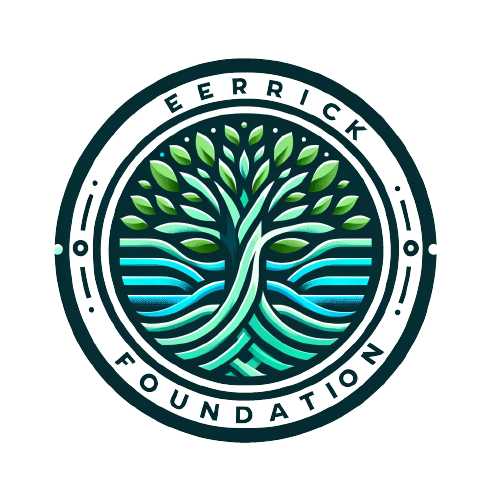Wind power is a cornerstone of modern renewable energy strategies. As we seek to reduce our reliance on fossil fuels and combat climate change, wind energy stands out for its potential to provide clean, sustainable electricity. However, like any energy source, it comes with its own set of benefits and challenges. This article will delve into the advantages and disadvantages of wind power, particularly within the context of sustainable development.
What is Wind Power?
Wind power harnesses the kinetic energy of wind through turbines that convert this energy into electricity. This process is achieved using large wind turbines, typically grouped in wind farms. Wind power is not a new concept; it’s been used for centuries in windmills and sailing ships, but its application in electricity generation is relatively recent.
Advantages of Wind Power
Renewable and Sustainable
One of the most significant advantages of wind power is its renewable nature. Wind is an inexhaustible resource, unlike fossil fuels, which are finite and depleted. This makes wind power a sustainable energy source that can be relied upon for the long term.
Reduces Greenhouse Gas Emissions
Wind energy is a clean power source that doesn’t produce greenhouse gas emissions during operation. This is crucial for mitigating climate change and improving air quality. By replacing coal and gas plants, wind power can significantly reduce the carbon footprint of our energy systems.
Economic Benefits
Wind power projects create jobs and stimulate local economies. From the manufacturing of turbines to their installation and maintenance, the wind energy sector provides numerous employment opportunities. Additionally, wind farms can generate income for landowners through lease payments.
Energy Independence
By investing in wind power, countries can reduce their dependency on imported fossil fuels. This enhances energy security and reduces exposure to volatile global fuel markets.
Technological Advancements
The wind energy sector has seen significant technological advancements in recent years. Modern turbines are more efficient, reliable, and capable of generating more power. This has led to a decrease in the cost of wind energy, making it more competitive with traditional energy sources.
Disadvantages of Wind Power
Intermittency
One of the primary disadvantages of wind power is its intermittency. Wind doesn’t blow consistently, leading to fluctuations in power generation. This can pose challenges for grid stability and requires backup power sources or storage solutions to ensure a reliable electricity supply.
High Initial Costs
While the operational costs of wind power are low, the initial investment can be substantial. The costs of manufacturing, transporting, and installing wind turbines are high, which can be a barrier to entry for some regions or developers.
Land and Resource Use
Wind farms require significant land areas, which can lead to land use conflicts. This is especially pertinent in densely populated regions or areas with high agricultural or ecological value. Additionally, the extraction of raw materials for turbine production can have environmental impacts.
Aesthetic and Noise Concerns
Wind turbines can be visually intrusive and are sometimes considered an eyesore by local communities. Additionally, they produce noise, which can be a nuisance for nearby residents. These factors can lead to opposition from local communities, complicating the development process.
Wildlife Impact
Wind turbines can pose a threat to wildlife, particularly birds and bats. Collisions with turbine blades can result in fatalities, impacting local ecosystems. Mitigating these impacts requires careful planning and the implementation of wildlife-friendly practices.
The Role of Wind Power in Sustainable Development
Despite its challenges, wind power plays a crucial role in sustainable development. It provides a clean, renewable energy source that can help meet growing energy demands while reducing environmental impacts. To maximize the benefits of wind power, it is essential to address its disadvantages through technological innovation, policy support, and community engagement.
Technological Innovations
Advancements in energy storage and grid management can help mitigate the intermittency issue. Batteries and other storage technologies can store excess energy generated during windy periods for use when the wind isn’t blowing. Additionally, innovative grid technologies can improve the integration of wind power into the electricity grid, enhancing reliability and efficiency.
Policy Support
Government policies and incentives can help offset the high initial costs of wind power projects. Subsidies, tax credits, and grants can make wind energy more accessible and attractive to investors and developers. Policies that promote research and development can also drive technological advancements and cost reductions.
Community Engagement
Engaging local communities in the planning and development of wind power projects can help address aesthetic, noise, and land use concerns. Transparent communication and involving residents in decision-making processes can build support and reduce opposition.
When considering the advantages and disadvantages of wind power in sustainable development, it is essential to focus on the broader context of environmental, economic, and social impacts. Wind power offers a renewable energy source that can significantly reduce greenhouse gas emissions and create economic opportunities. However, its intermittent nature, high initial costs, and potential environmental impacts must be addressed through innovation, policy, and community engagement to realize its full potential.
Conclusion
Wind power is a vital component of our transition to a more sustainable energy system. While it presents several challenges, the advantages of wind power far outweigh the disadvantages when managed effectively. By continuing to invest in technological advancements, supportive policies, and community engagement, we can harness the full potential of wind energy for a cleaner, more sustainable future.
Understanding the advantages and disadvantages of wind power is crucial for making informed decisions about our energy future. By balancing the benefits and challenges, we can develop a robust and sustainable energy strategy that meets our needs while protecting the environment. Wind power, with its immense potential, will undoubtedly play a significant role in this endeavor.

